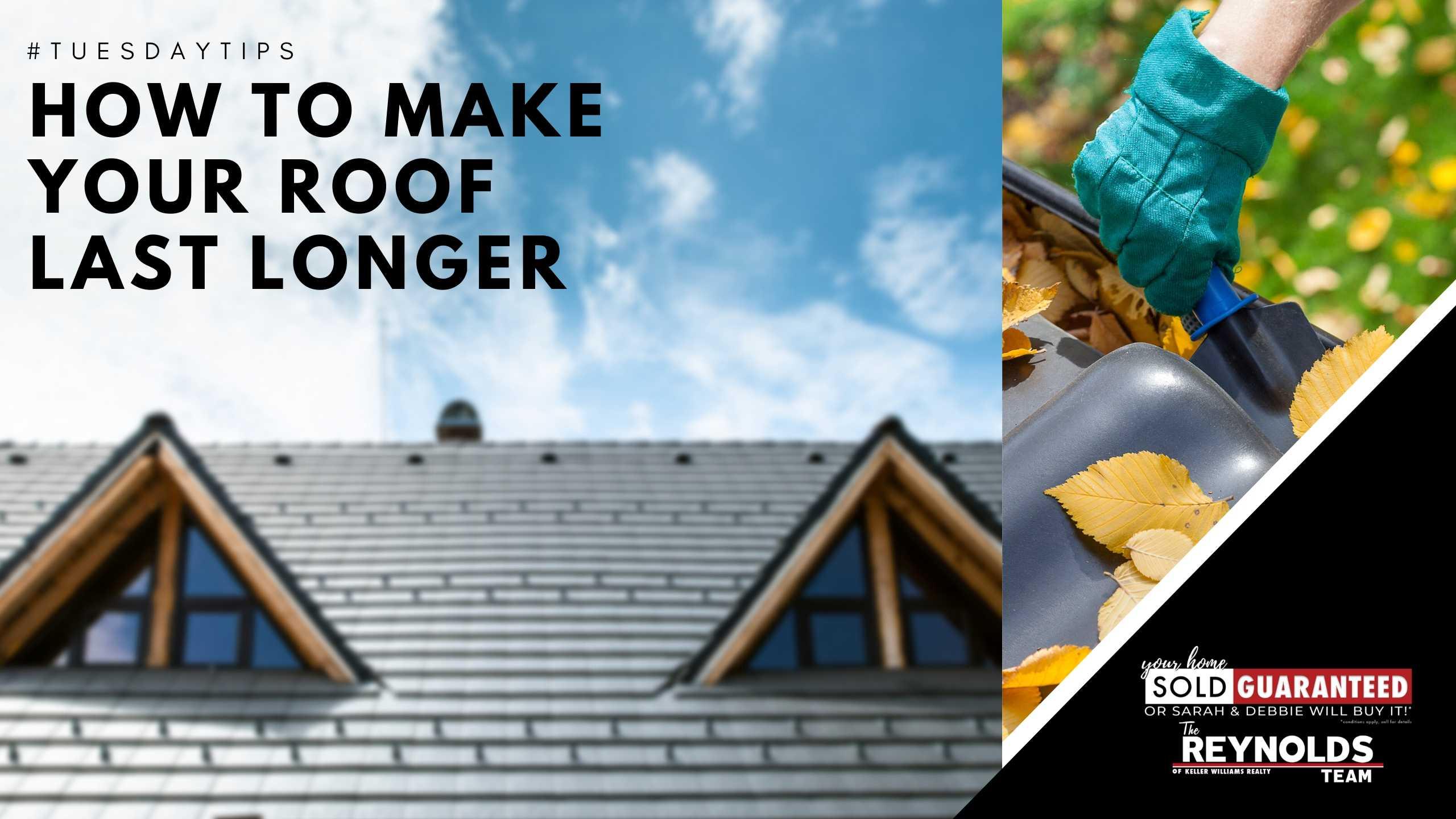Dreading the day you’ll have to replace your roof? We get it—the longer you can put off making this investment, the better! The average cost to replace a roof is right around $20,000, with high-end materials costing closer to $40,000. So if you’re looking to avoid this expense for as long as possible, or want to protect your brand new roof so it gets the longest life, keep reading below for tips on how to make your roof last longer!
1. Clean the gutters: It may surprise you that not only can clogged gutters cause downstream problems such as a wet basement and ruined siding paint, but this overflow can also go upward and affect your roof. An overflow of sitting leaves can cause roof rafters to rot! Simply cleaning your gutters out at the beginning of Spring and Fall will save you thousands on roof repairs.
2. Remove leaves: Piles of leaves can collect in roof valleys or near chimneys. They can trap moisture and decompose, creating the fertile ground for weeds and vines to grow, which would be a nightmare to remove. Get those leaves off of your roof before it’s too late!
3. Never use a power washer: This could damage shingles and force water up underneath them, allowing moisture to get trapped. Instead, get a roof leaf rake and then use a garden hose or hire a professional.
4. Say goodbye to moss: Although moss can be an aesthetically pleasing rustic look you might like, if you like your bank account more, you should immediately get rid of it and prevent it from coming back. Moss is different than black algae, though. This filmy growth will not hurt your roof, whereas moss will trap water. Use potassium salts and fatty acids to kill moss and wash away, being careful not to let the runoff go down the storm drain or into waterways. Prevent moss from coming back by installing zinc strips if you don’t live near a waterway since the runoff could harm aquatic life.
5. Get rid of overhanging branches: This may seem obvious, but you definitely don’t want large branches and debris falling on your roof during storms. This isn’t the only issue with overhanging branches, though—they also allow critters access to your roof and encourage moss growth.
6. Prevent ice buildup: Remove snow between storms but don’t pry off the ice that’s already formed as this could damage the roof.
7. Actively inspect: Look and listen for any signs of wear and tear and make sure to address the smaller problems before they turn into bigger ones!
—
Sell Your Home Virtually GUARANTEED or We’ll Buy It!* No Need to Leave the House, No Showings, Everything done 100% Virtually. Give us a Call at 703-297-4251. Visit HERE for more details.




 By submitting information, I am providing my express written consent to be contacted by representatives of this website through a live agent, artificial or prerecorded voice, and automated SMS text at my residential or cellular number, dialed manually or by autodialer, by email, and mail.
By submitting information, I am providing my express written consent to be contacted by representatives of this website through a live agent, artificial or prerecorded voice, and automated SMS text at my residential or cellular number, dialed manually or by autodialer, by email, and mail.


